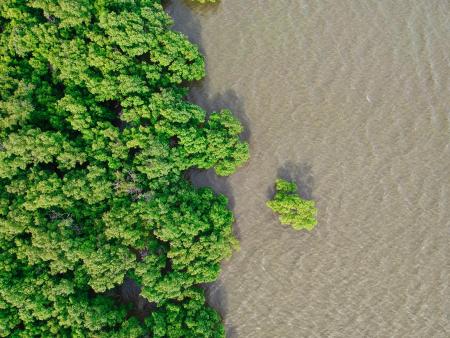
Area characterisation:
The area is 814.39 km2 of marine protected area in Madagascar.
Objective:
The project aims to establish a long-term mangrove payment for ecosystem services scheme to reduce deforestation and degradation, and restore mangroves in the Bay of Assassins in Madagascar.
Financing:
No information
Potential impacts/benefits:
- Social development: have helped develop local infrastructure and alternative livelihoods, by providing additional income to the local community
- Environmental impact: have improved the conservation of 1,300 ha mangrove ecosystem and their biodiversity
- Governance: have strenghtened the community capacity in managing a Locally Managed Marine Area (LMMA)
- Women's empowerment: have supported women's involvement in the governance of natural resources - both mangrove and fisheries activities.
Actions:
- Mangrove reforestation by communities
- Participatory monitoring and mapping for management
- Participatory Forest Management plan
Lessons learnt:
- Best time for mangrove replanting should be decided with community members
- Promoting a voluntary mangrove reforestation is key to ensure that it can be continued without external financial support
- The dissemination of the results of the monitoring helps the community to understand the state of their resources and the amount of carbon stocks in their mangrove forest
Organisations:
Velondriake; PlanVivo; Darwin Initiative; The John D. and Catherine Mac Arthur Foundation; Blue Ventures; Blue Forests, Global Environment Facilitaty (GEF); UNEP
Contacts:
No information
Awards:
Pathfinder Award 2021 Winner
Global goals:
-
1. No poverty
-
2. Zero Hunger
-
3. Good Health and well being
-
4. Quality education
-
5. Gender Equality
-
6. Clean water and sanitation
-
9. Industry, innovation and infrastructure
-
11. Sustainable cities and communities
-
13. Climate action
-
14. Life below water
-
15. Life on land
-
17. Partnerships for the goals
NBS goals:
- Restoring ecosystems and their functions
- Developing climate change adaptation
- Improving risk management and resilience
- Establishing nature-based solutions for coastal resilience
- Multi-functional nature-based watershed management and ecosystem restoration
NBS benefits:
- Developing climate change adaptation; improving risk management and resilience
- Better protection and restoration of coastal ecosystems
- Reduce flood risk
- Developing climate change mitigation
- Restoring ecosystems and their functions
- Increase achievements of biodiversity targets
- Increase quality and quantity of green and blue infrastructures
- Increased cultural richness and biodiversity
- Social inclusion
- Sustainable development of coastal regions